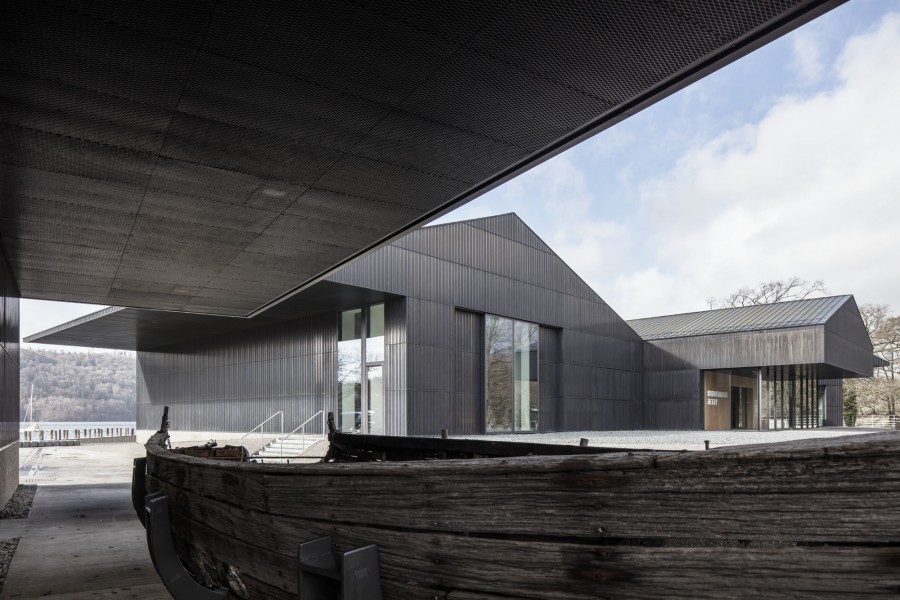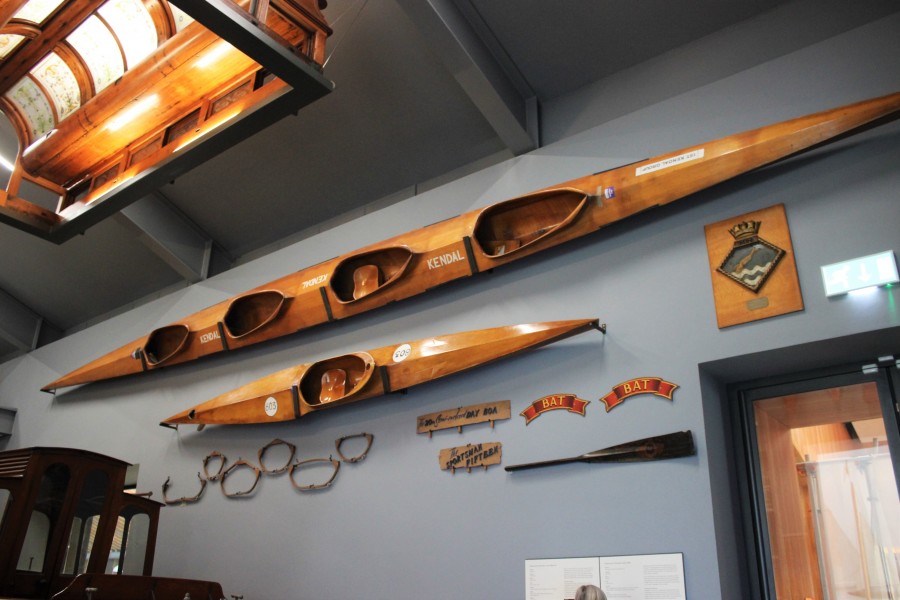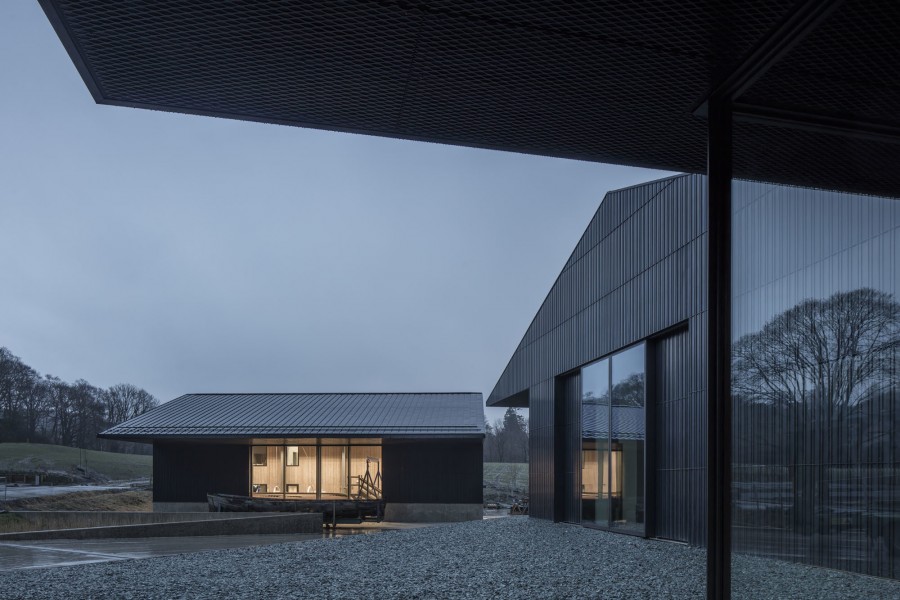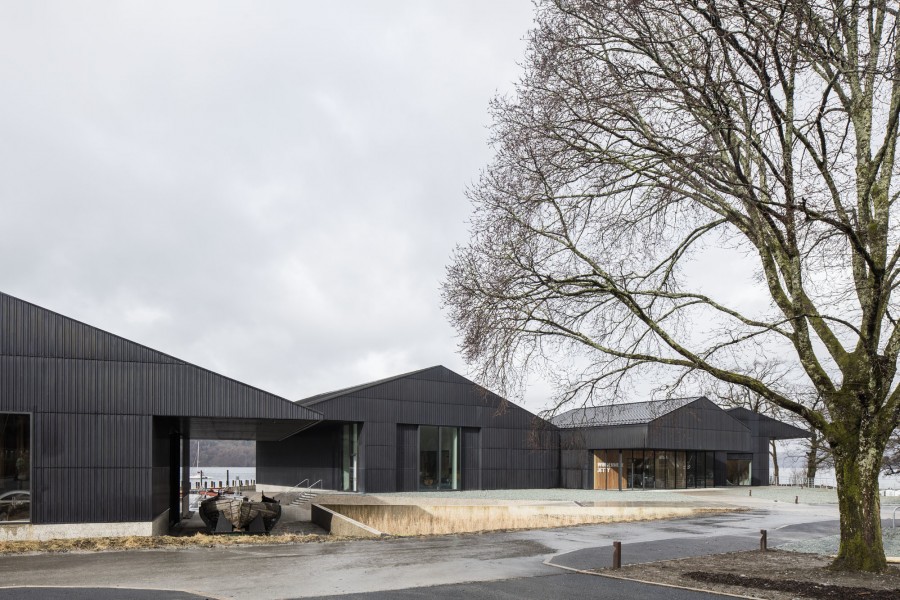
THE NEW MULTI-AWARD-WINNING WINDERMERE JETTY MUSEUM, DESIGNED BY CARMODY GROARKE, REHOUSES AN INTERNATIONALLY SIGNIFICANT BOAT COLLECTION ON THE SHORES OF WINDERMERE IN THE LAKE DISTRICT.
The new museum building includes exhibition spaces for the display of steam launches, motorboats, yachts and other vessels, telling the stories of their construction and use on the lake. A wet dock allows the display of boats on water within the museum, and the site’s boatyard will repurpose a historic gravel-extraction plant, continuing the working life of the place with an active conservation programme of the boats.
Emphasis is placed on a visitor experience amongst buildings in a park landscape that creates a strong connection between people, boats and water, as well as providing a reinterpretation of the site’s industrial and picturesque heritage.
“The language of the architecture deliberately breaks down the scale of a very large museum into a cluster of pitched roof forms arranged around the wet dock and all aligned spatially to the lakeshore,” explained the architects Carmordy Groarke. “Extended canopies distinguish the function of each building as part of the overall museum ensemble and extend the inside spaces of the building with all-weather shelter into the landscape.

“Oxidised copper cladding covers all external surfaces and consolidates the appearance of a collection of buildings working together as a single museum. The cladding will gradually weather over time and blend the appearance of the structures into the natural environment.”
The project was won through an open international competition organised by the Royal Institute of British Architects.
The major new attraction has been constructed by Thomas Armstrong and features a unique collection along with exhibition spaces and live conservation workshops.
The architects were keen to do justice to the rich social history contained within the museum and its lakeside location with a sustainable design of architectural distinction. The buildings are carefully oriented to improve the level of natural light inside, reed beds naturally treat water run-off and a lake source heat pump provides heat and hot water.
Owned by Lakeland Arts, it is one of the first contemporary buildings on the shores of Windermere in over 50 years and is principally funded by the National Lottery.
Kingspan’s Kooltherm and Therma products have been installed as part of the naturally weathered copper façade for the Windermere Jetty.
The naturally ventilated museum is also designed to be highly energy efficient and, as part of this approach, Kingspan Kooltherm K15 Rainscreen Board was specified for the walls of the main museum building with Kingspan Thermapitch TP10 chosen for its pitched roof.
Kingspan Kooltherm K15 Rainscreen Board is the first insulation board for rainscreen cladding applications to achieve LABC Registered Detail status. With a thermal conductivity as low as 0.020 W/mK, the boards allowed the design team to achieve excellent fabric performance for the walls of the museum. Its lightweight design also streamlined the installation process in the challenging lakeside setting. The outer copper cladding will gently patina over time, adding green hues to the dark brown cladding.
The museum’s pitched roof has been created to echo the form of many of the local boat houses. Kingspan Thermapitch TP10 was a natural choice for this element. Its fibre-free insulation core has a thermal conductivity of 0.022 W/mK and can be used within a variety of pitched warm roof constructions.

TORMAX supplied automatic sliding and swing doors for the £20m development.
Enhancing the native aesthetics of the main entrance building, TORMAX was contracted to install a double set of full-height, automatic sliding doors, giving clear access for all visitors. Encouraging unhindered movement of pedestrians throughout the new café, TORMAX also installed two, full-glass automatic swing doors.
Delivering minimalist automation, the swing doors are invisibly powered by in-house designed iMotion 1401 operators. Neatly concealed within the floor spacing, the 1401 door drives feature none of the working parts that commonly wear out, ensuring exceptional reliability and a long lifespan.
As part of the brief, lead contractor Thomas Armstrong Construction was tasked with providing a consistently dust free and durable surface flooring finish with no cracks to the museum’s extensive exhibition halls.
The business subsequently awarded the work to industry expert, Aggregate Industries who oversaw the entire flooring specification; not only supplying the full product requirement but working with a design specialist to ensure a seamless solutions approach.
Crucially, as a traditional dry shake topping would have been incredibly difficult to install over the museum’s underfloor heating solution, a tailor-made combination of internal Diamondcrete slabs was used throughout.
Carefully constructed from controlled binders and admixtures in conjunction with aggregates, Diamondcrete boasts superior durability and enhanced performance where abrasive elements are present. The result is a robust, superior strength concrete flooring solution able to withstand the harsh weather conditions associated with the area, along with high frequency and use expected of the museum.




























